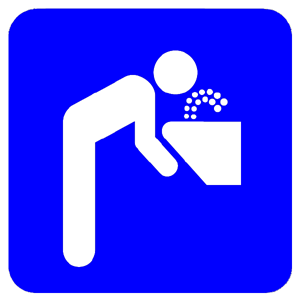Fresh from the Tap
How is it that so many people want water from their beer from a tap, but they want their water to come in a bottle? Well, folks who know and love beer extol the quality and flavor that comes from a keg rather than a bottle. I'll talk about beer another day, but interestingly enough, water from the tap also has advantages over water from a bottle. Water from a municipal tap is tested more often and more extensively, it is from nearby source(s), uses no packaging and is radically cheaper than water from a bottle.
Water Safety Testing
Quite simply, tap water is tested and treated more often and for more contaminants than bottled water. The EPA mandates that municipal water sources test for and treat water to remove E. Coli, Fecal Coliform, Cryptosporidium and Giardia. The FDA does not require that water bottlers test for these pollutants. The EPA requires that municipal water testing is done by certified labs who report water quality violations to the state and federal government and that consumers have a right to know about these violations. The FDA does not have the same water quality testing and reporting regulations for bottled water.
http://www.nrdc.org/water/drinking/bw/table1.html
Water Sources and Packaging
Bottled water is often marketed on the appeal of exotic and pristine sources like the island of Fiji or rustic springs around the world. Since those romantic locations are so remote their bottled waters must first be packaged into thousands and millions of plastic or glass (for the premium brands) bottles. The cases and pallets of bottled water are then shipped thousands of miles and trucked hundreds or thousands of miles before reaching a retailer. We then drive down to the local Quicky-Mart, grocery store or warehouse club, load up our vehicle and drive back with our exotically encased water. The amount of petroleum used to package and transport bottled water is ridiculously excessive and wasteful.
The Price of Water
Bottled water is costly. Packaging and shipping water halfway around the world has an obvious environmental cost, but that's only part of it. A one liter bottle of water costs around $1.79, which works out to $6.78 per gallon. The residential rate for municipal water in Santa Fe, NM ranges between $.0058 and $.0165 per gallon (for use up to 7000 gallons per month). Santa Fe is in the arid Southwestern U.S. and does not have "cheap" water, but the water here is still an average 1/678th of the cost of bottled water.
Kick the Bottle
Fortunately, kicking the bottled water habit is quite easy. At work I have a reusable water bottle at my desk which I drink from and fill daily. At home I use a filtering pitcher to reduce the chlorine in the water I drink. I have no concerns about the safety of city water, I just prefer the (lack of) taste of the filtered water. When I travel, I take one of the promotional water bottles from the pile I have accumulated. When I dine out at a restaurant I ask for tap water, because if it's good enough to cook with, it's good enough to drink. So I stay fully hydrated, without paying the direct and embodied costs to ship that water from around the planet.
Further Reading:
Natural Resources Defense Council - Bottled Water Report
www.nrdc.org/water/drinking/bw/bwinx.asp
Corporate Accountability International - Think Outside the Bottle Campaign
ThinkOutsideTheBottle.org
Fast Company - Message in a Bottle
www.fastcompany.com/magazine/117/features-message-in-a-bottle.html


